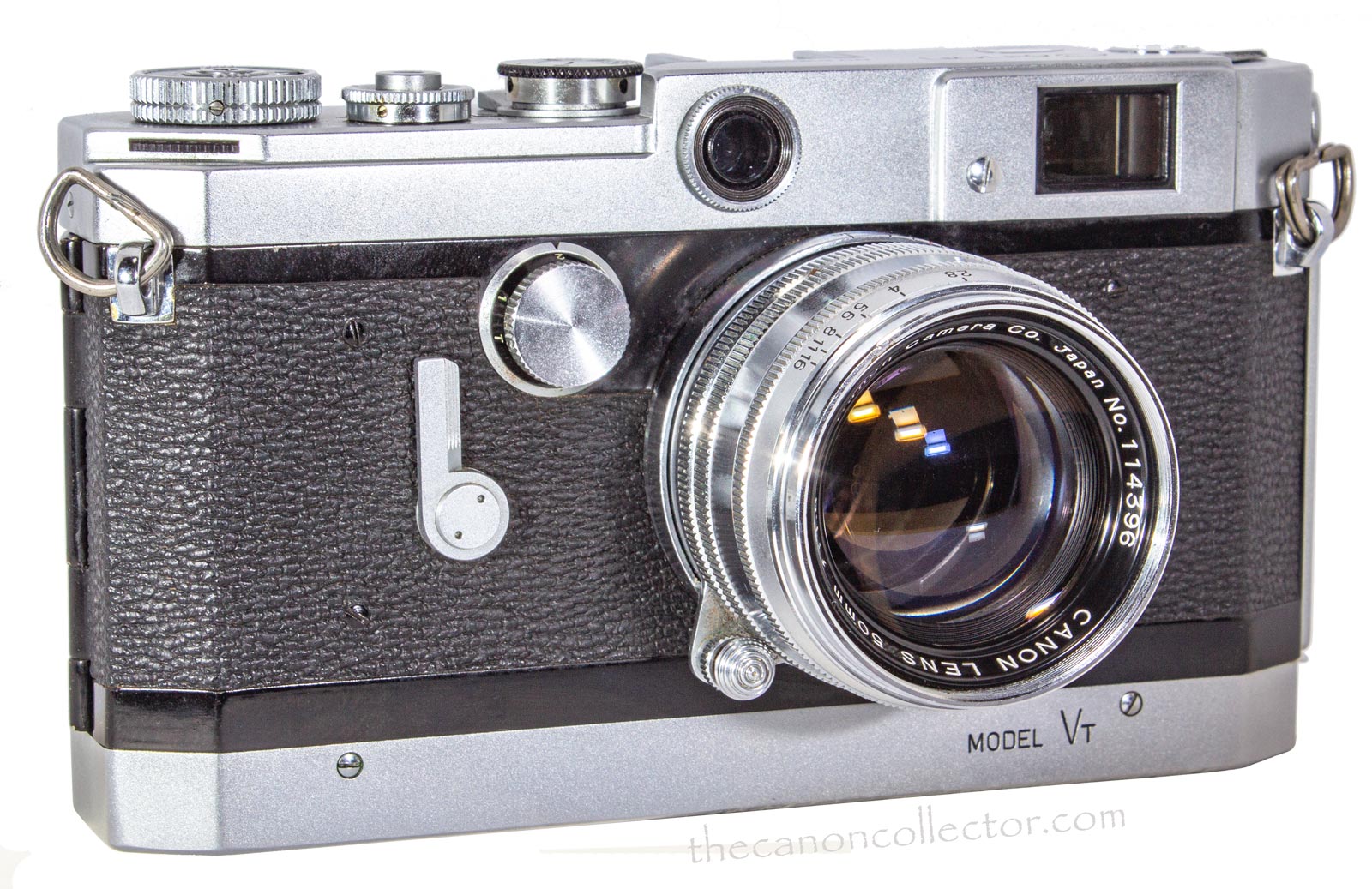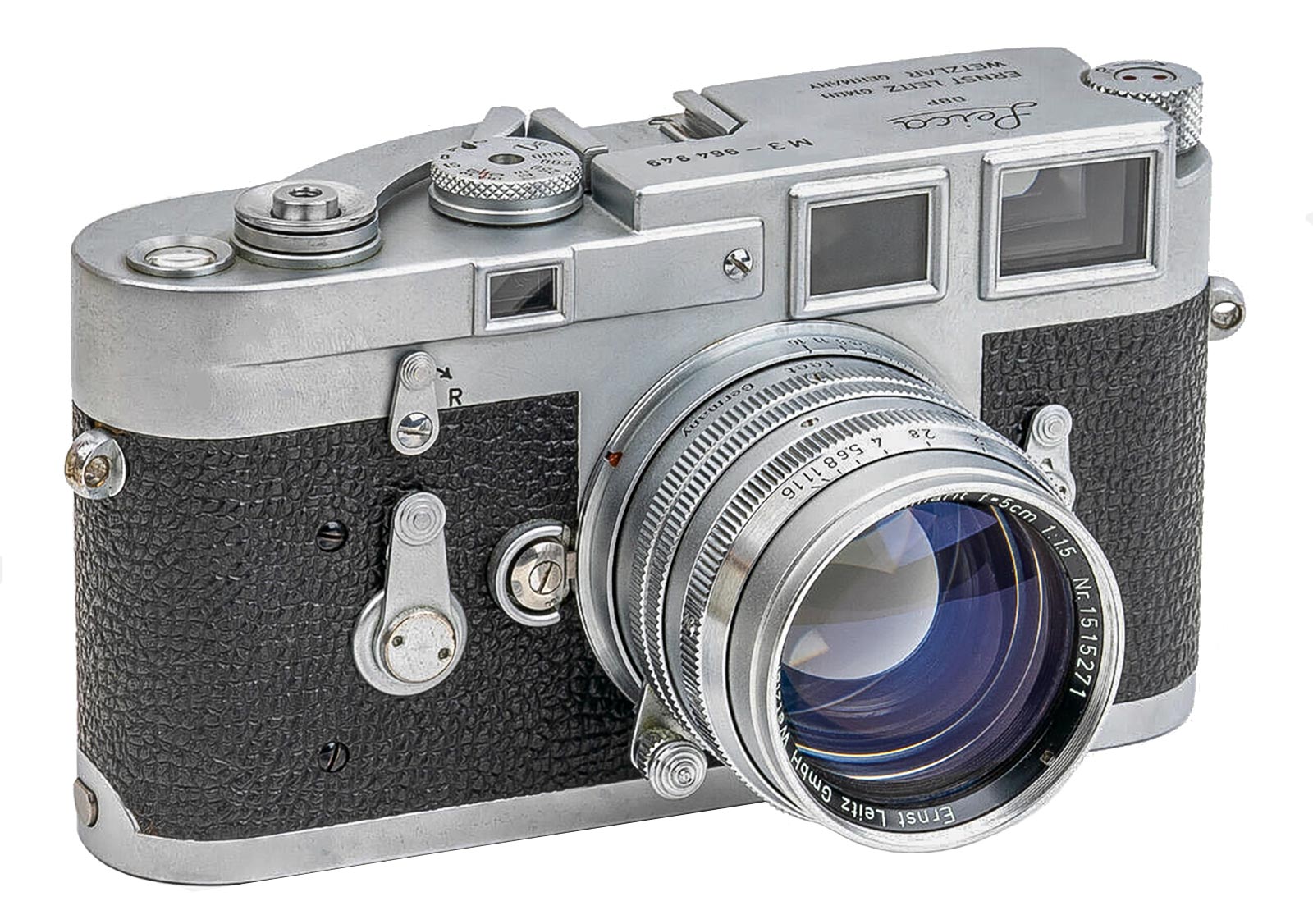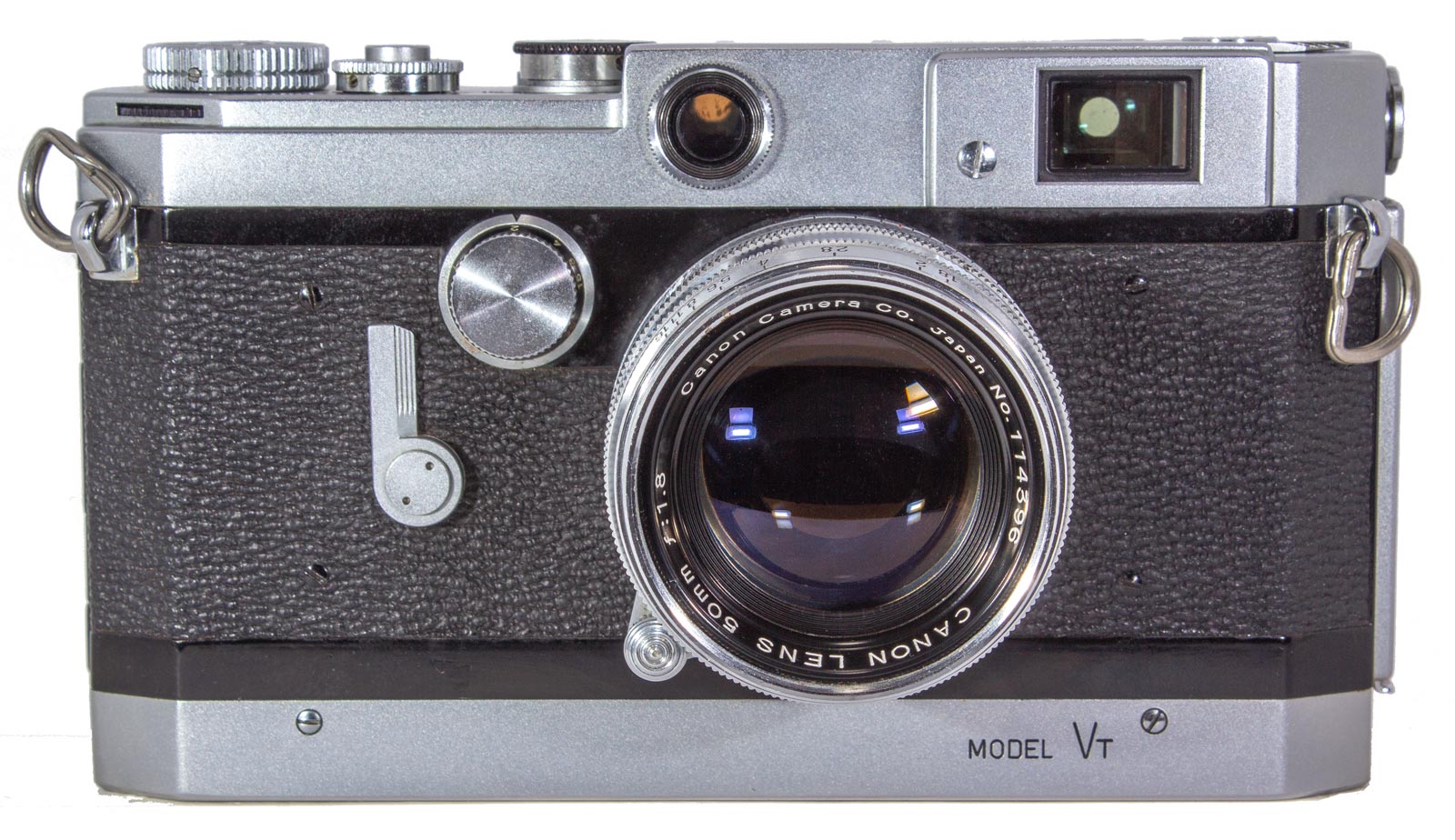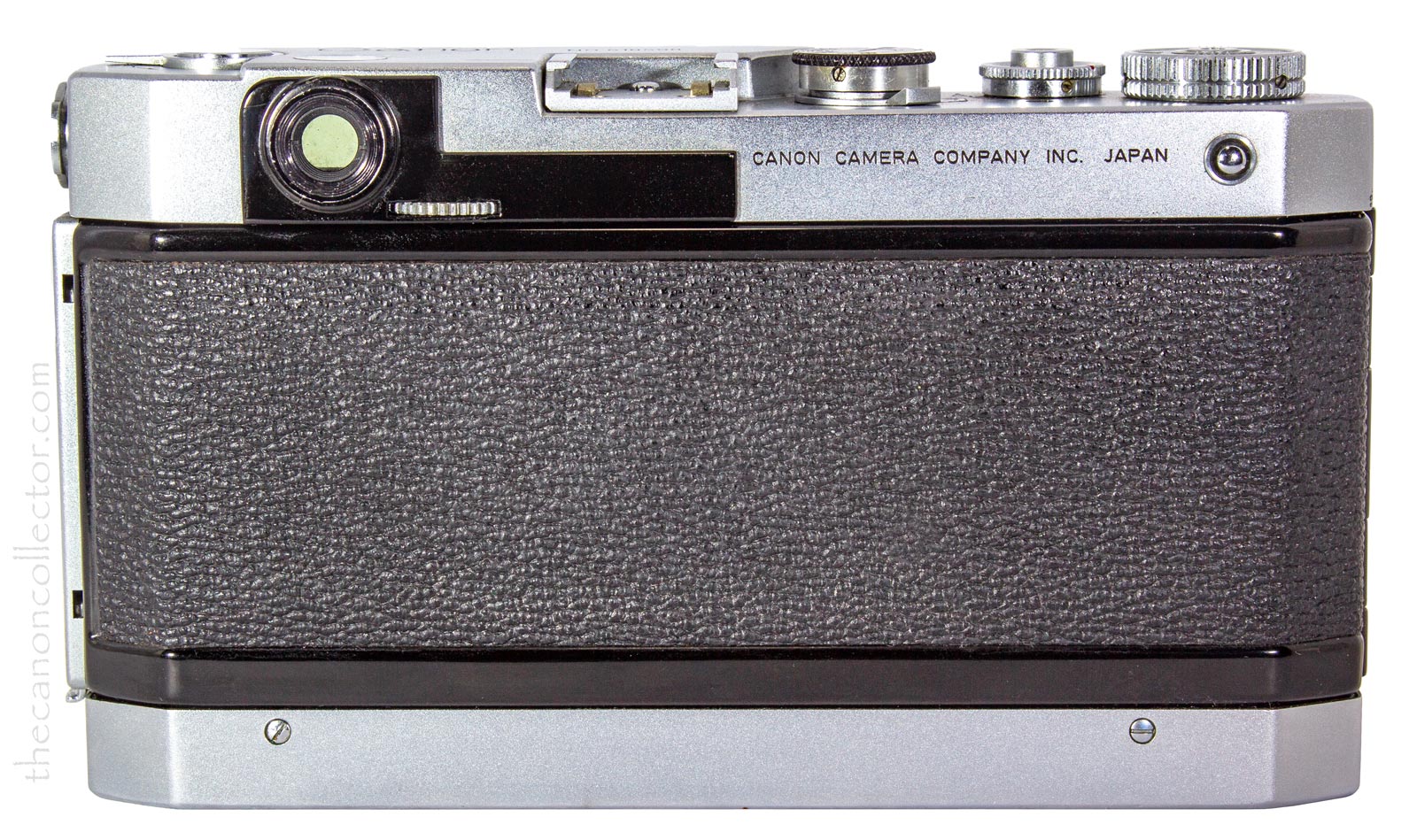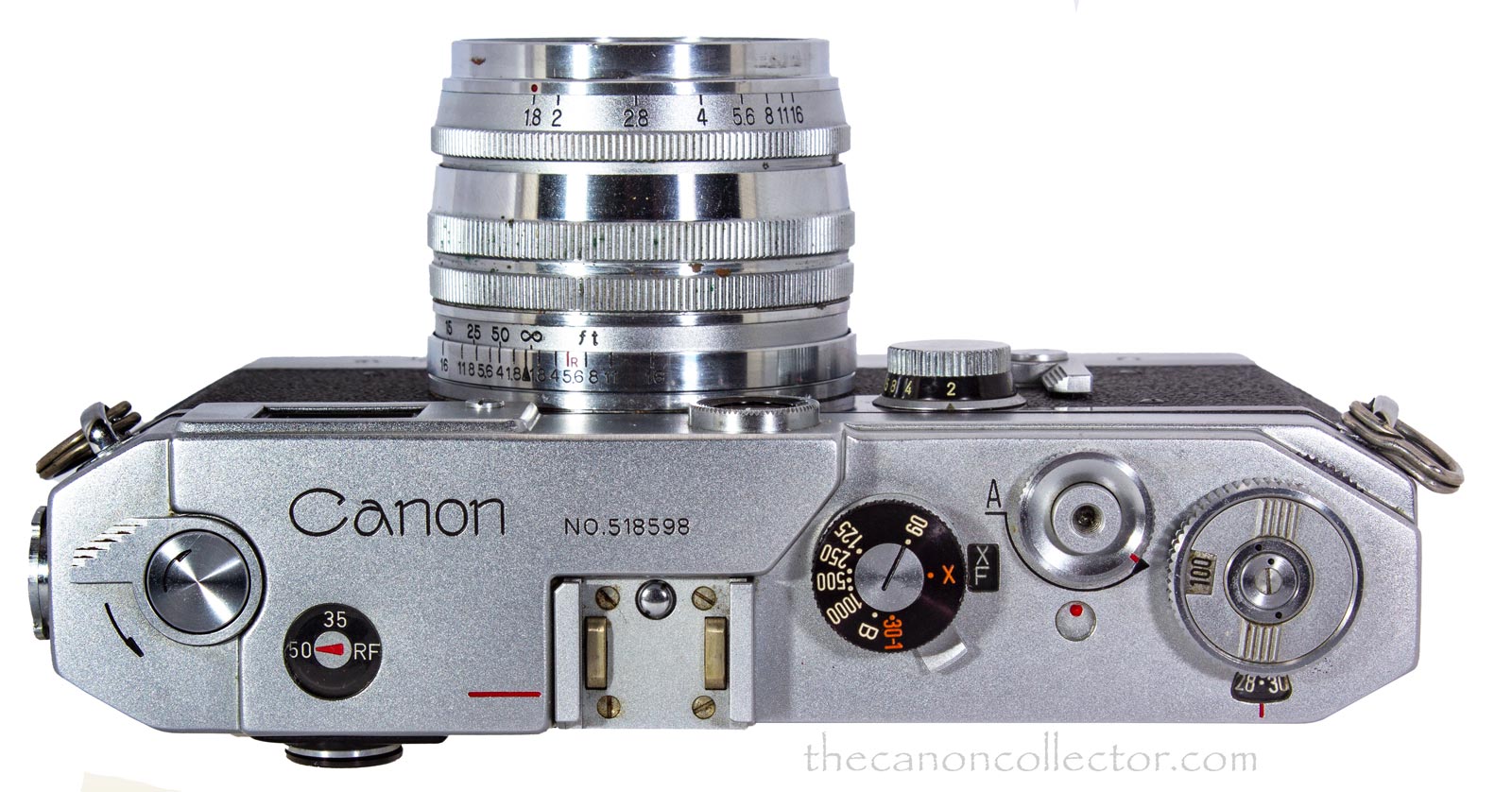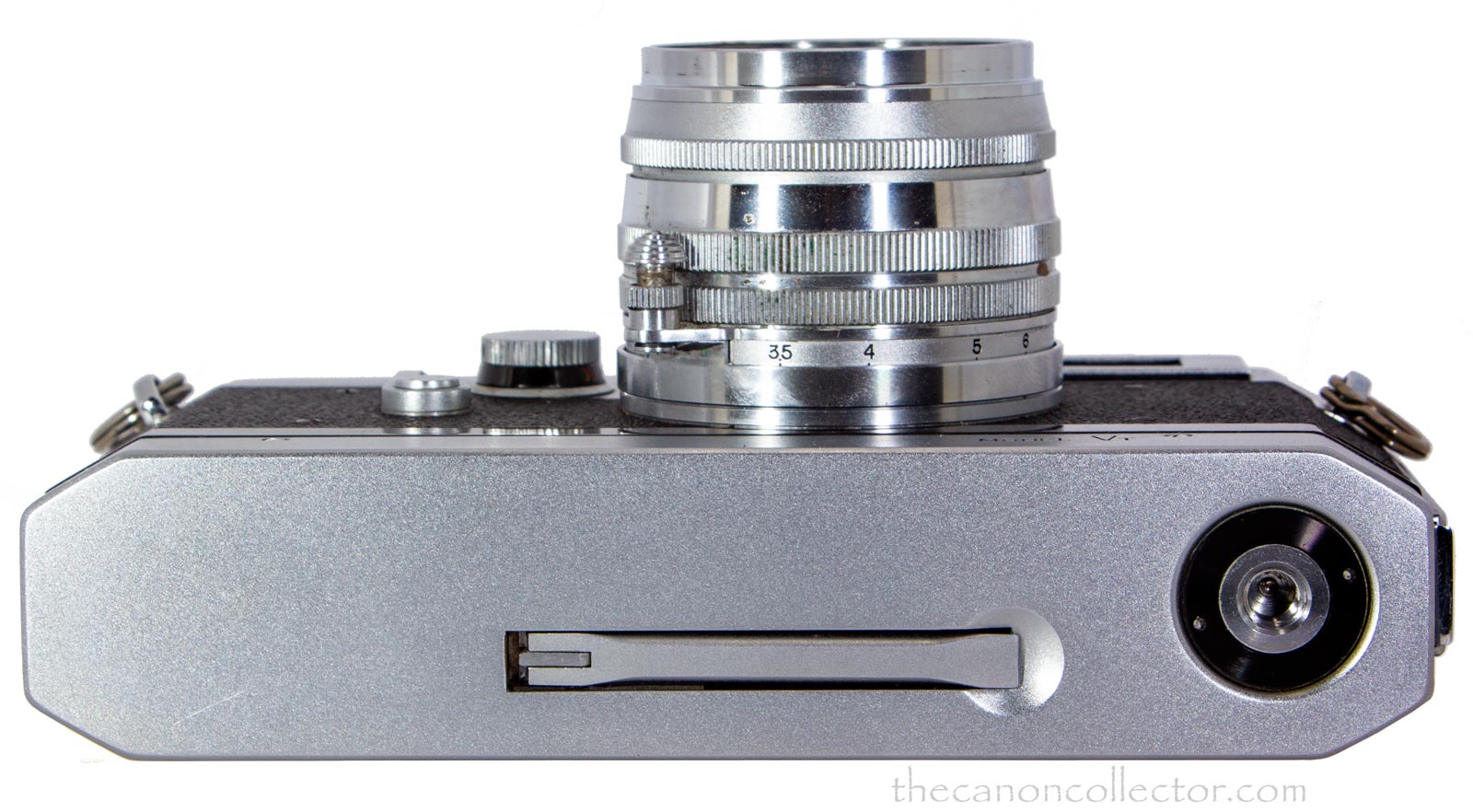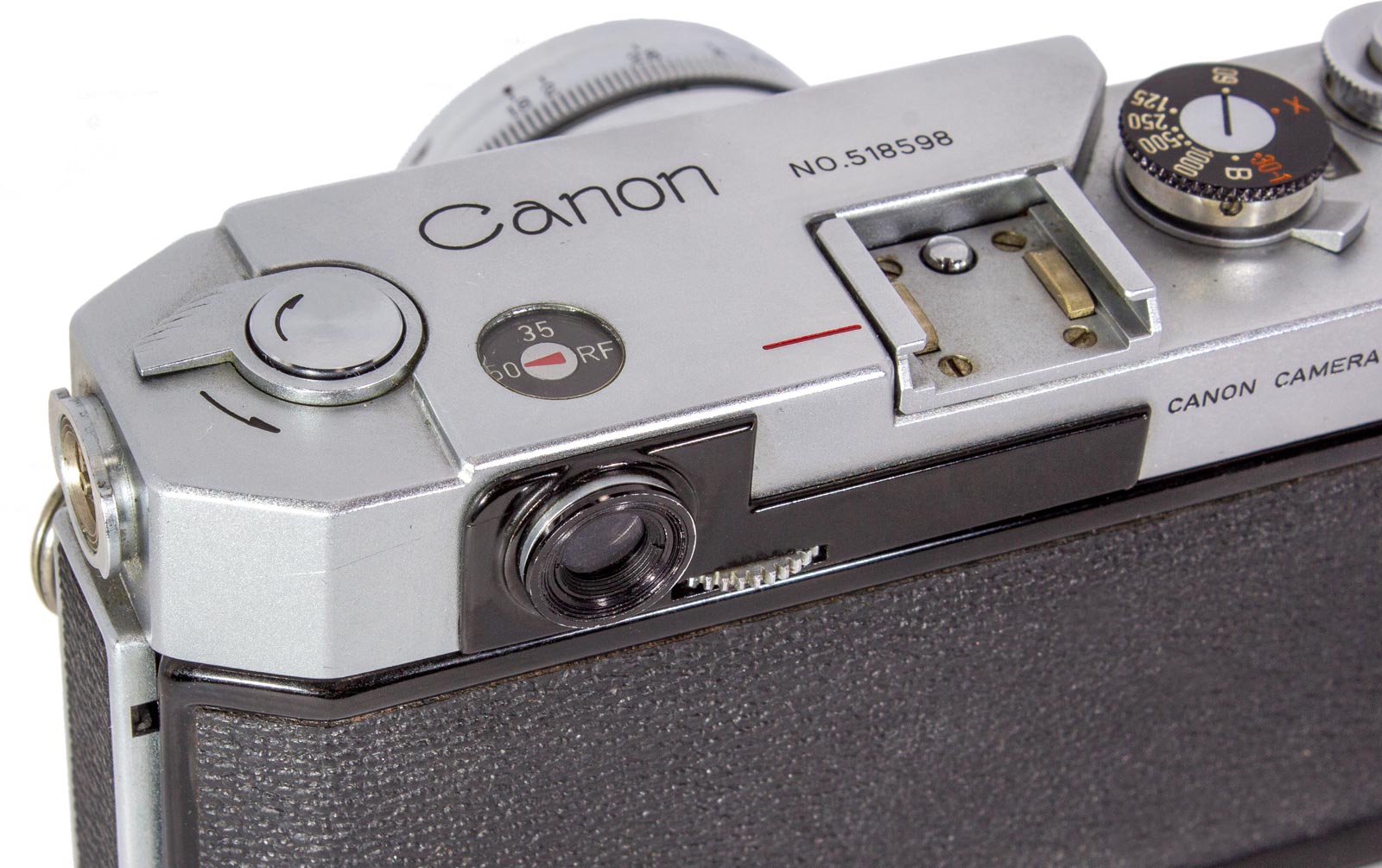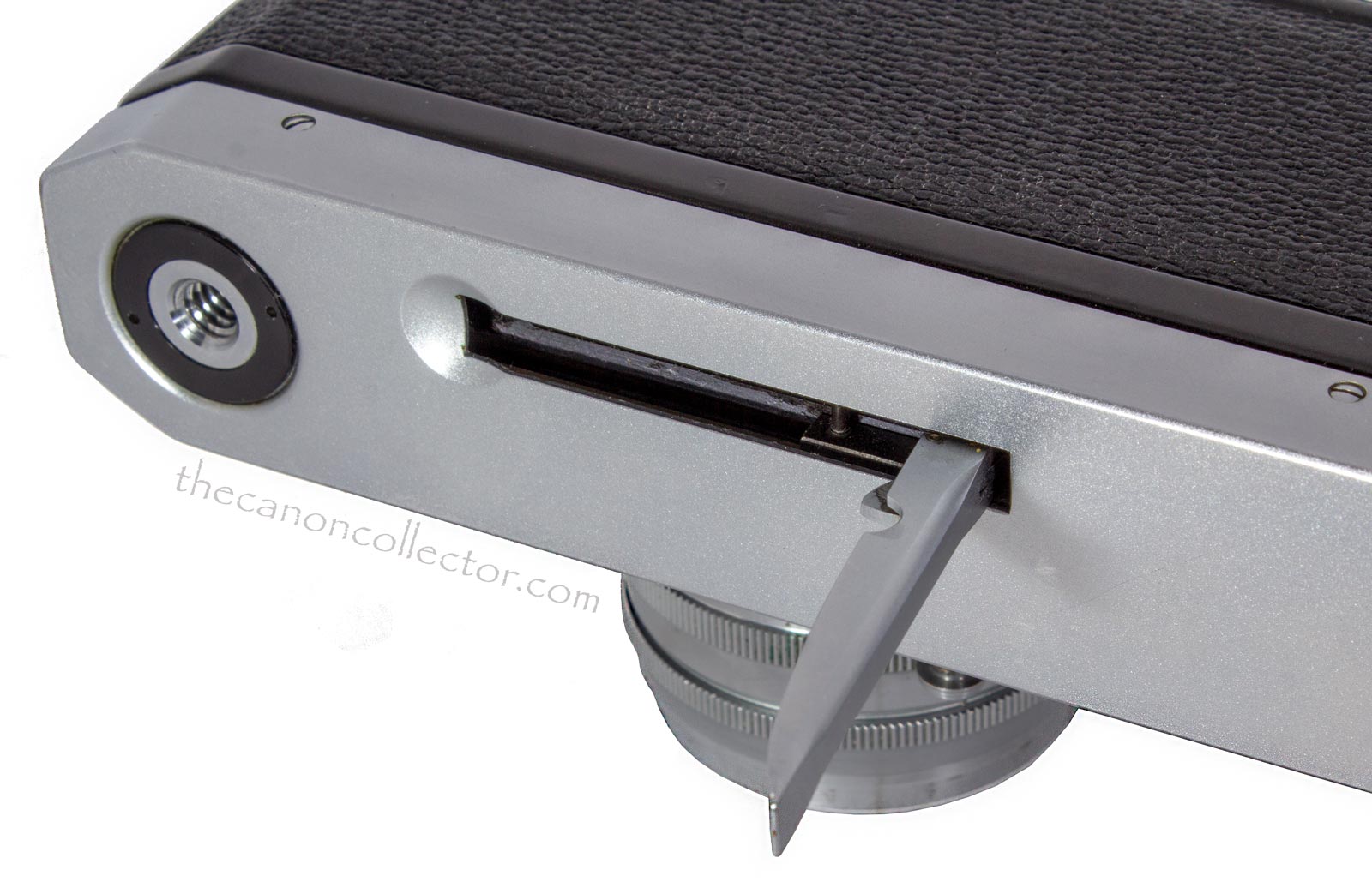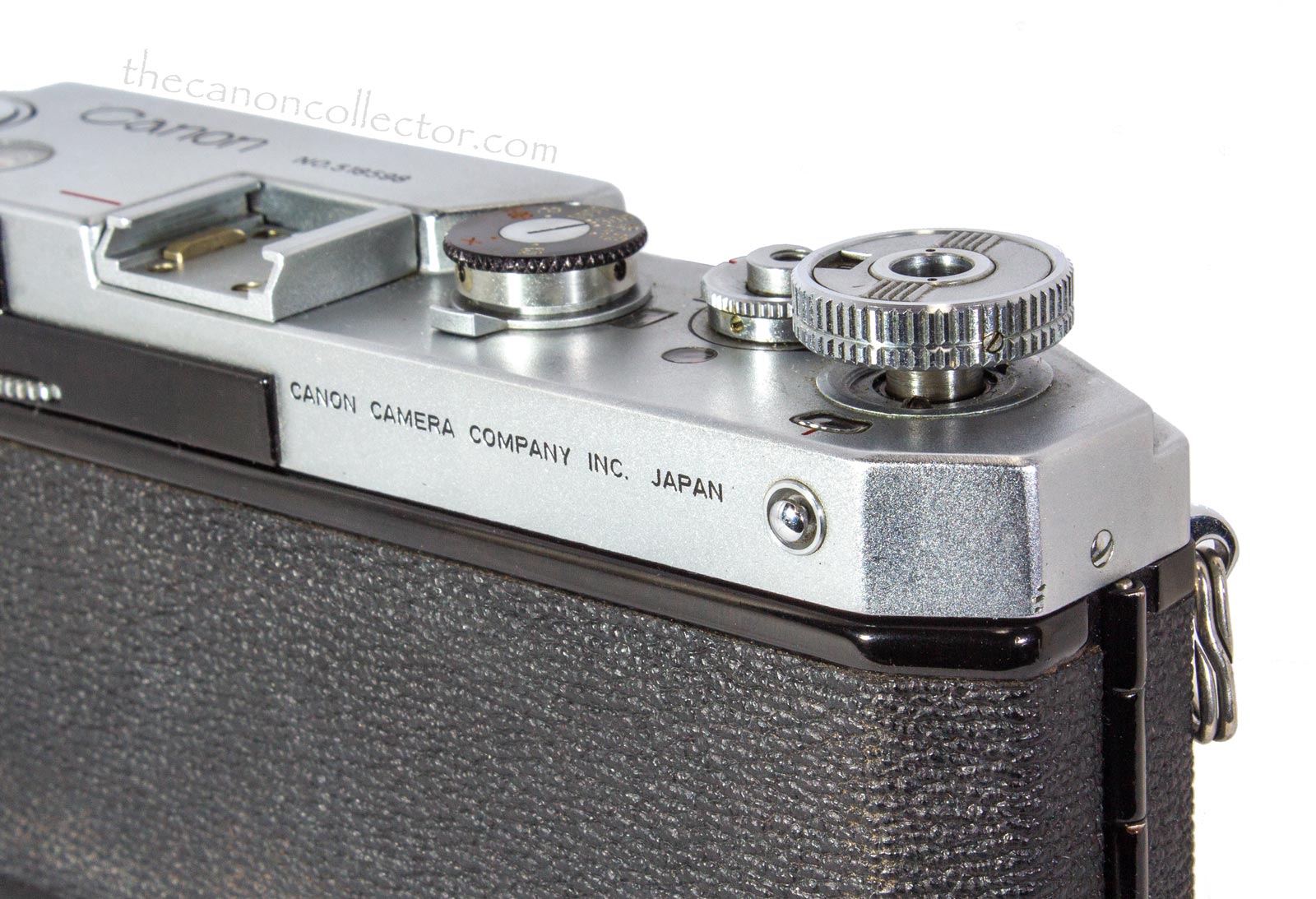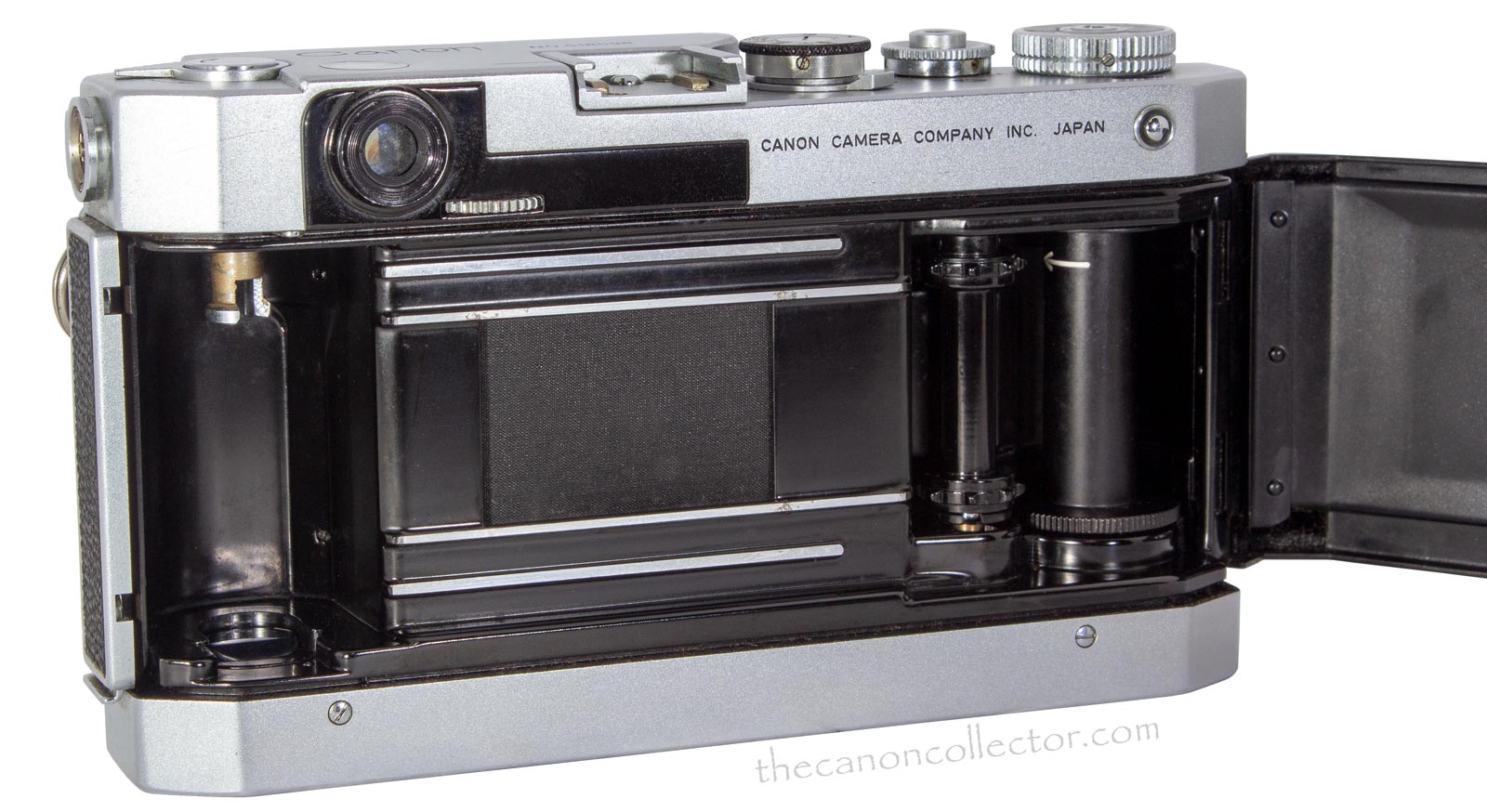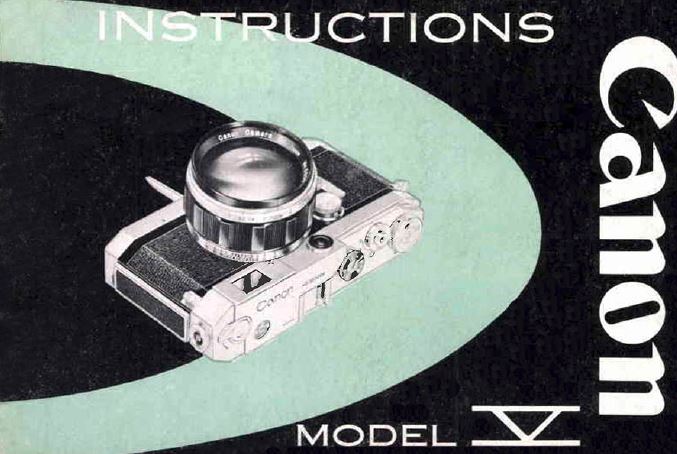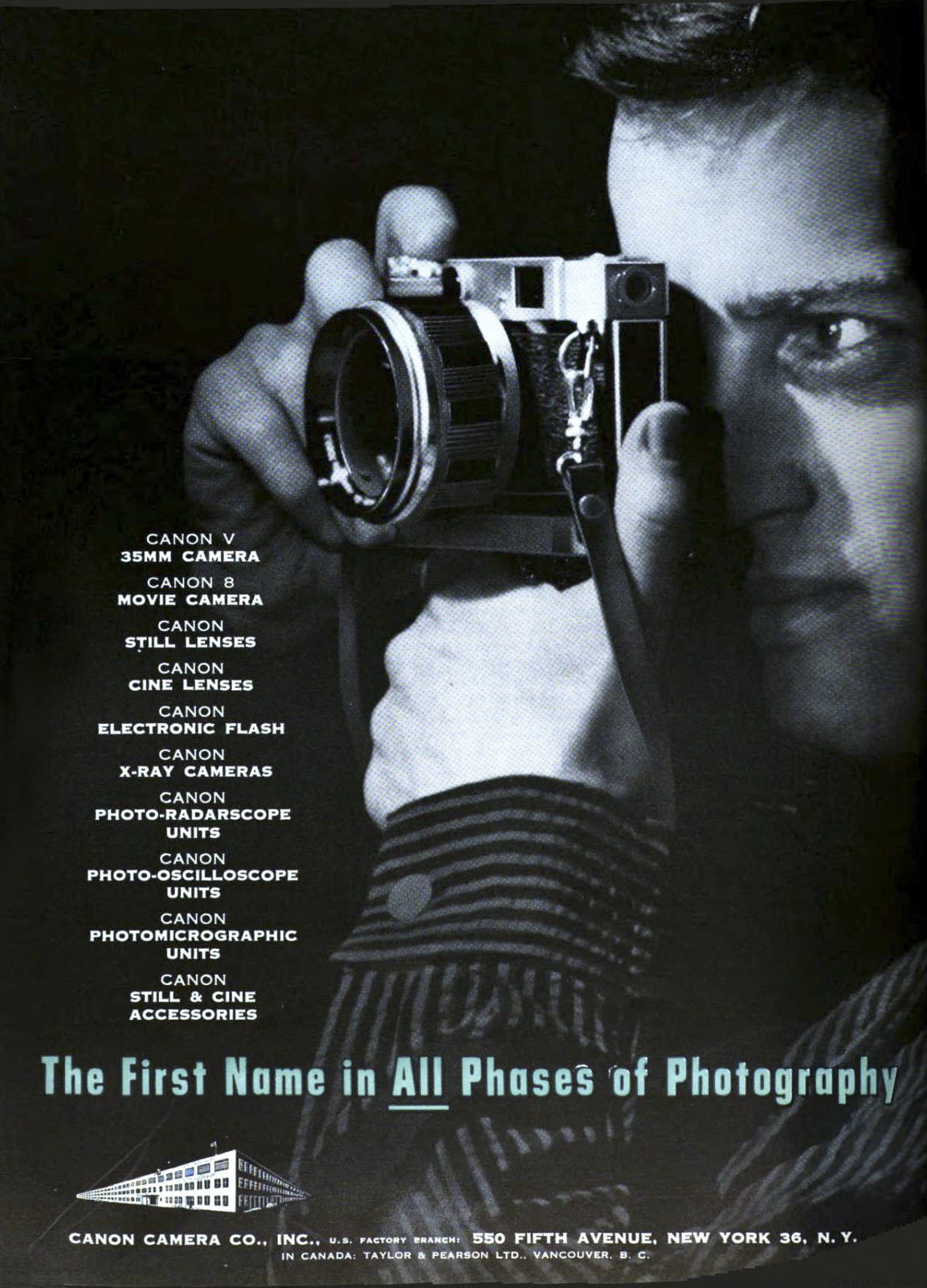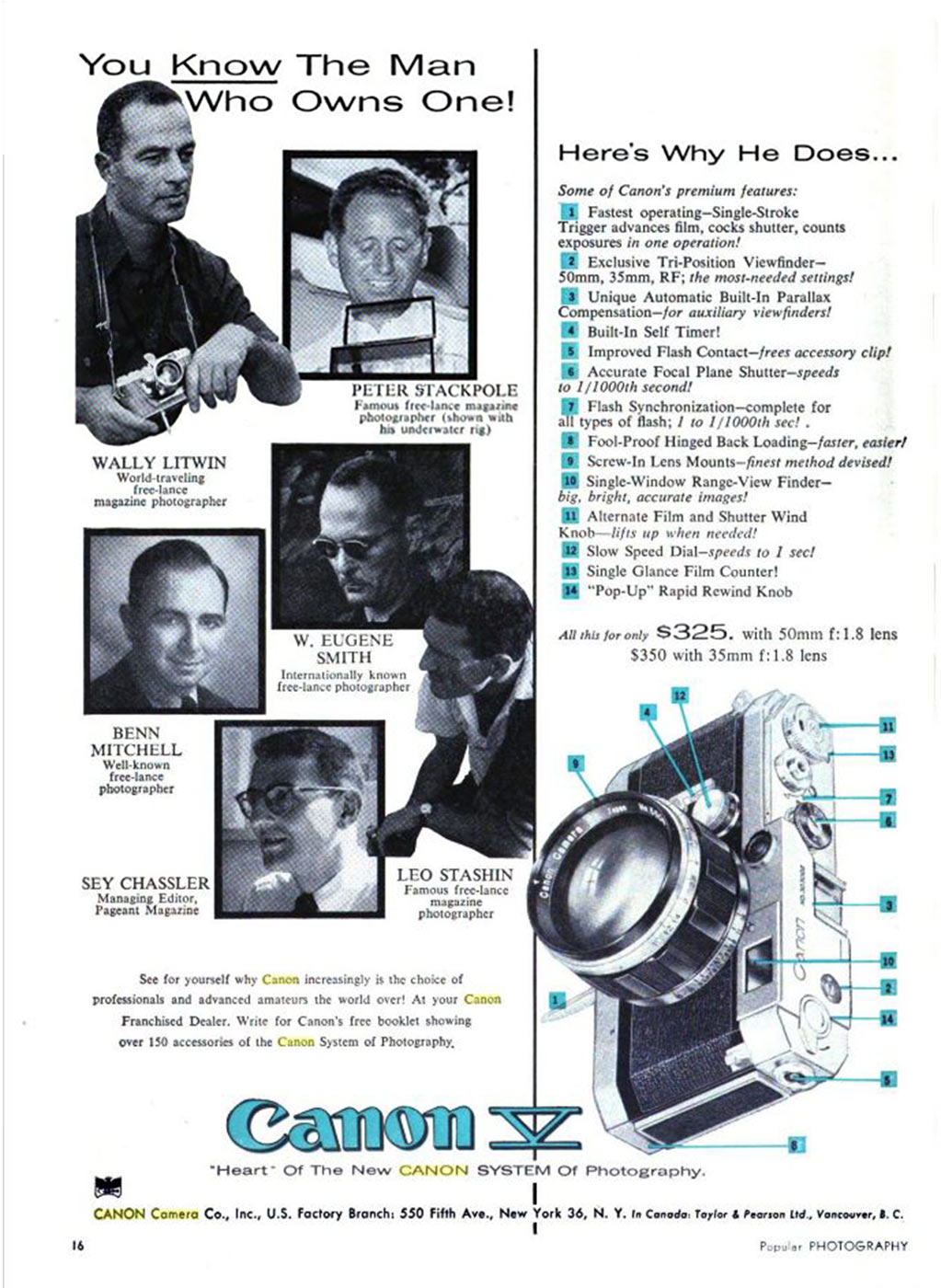This is my Canon Vt (Ser. No. 518598) with Canon Lens 50mm f/1.8 (Ser. No. 114396). This camera was Canon’s first attempt to counter the Leitz Leica M3.
The Canon Vt
From the Leica II camera Leitz introduced in 1932 until the Model IIIf being sold in 1954 all of their cameras were based on the original Barnack design with added viewfinder and rangefinder. However, after two and a half decades the design was found wanting and competition was, even for Leitz, becoming a concern.
In 1954 Leitz introduced the Model M3 which broke with tradition and was to become their most successful camera.
In fact, there are those who consider the M3 the finest camera ever made. However, that is a conclusion one may question, especially if one is a Canon afficianado.
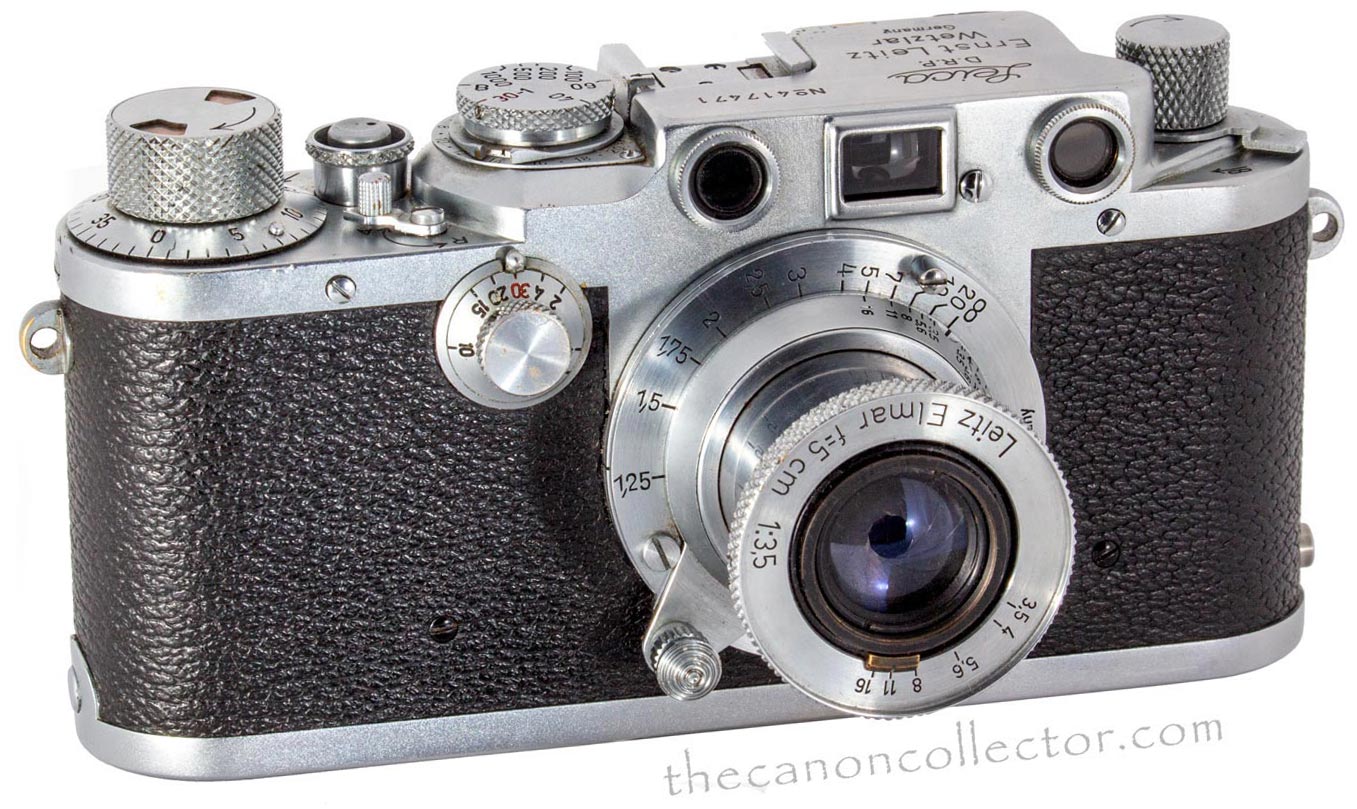
This is the Leica IIIc is a basic Barnack styled Leitz camera in its mature form. For two and a half decades from 1932 until 1954, and later, this was the most sought of camera in the world and the standard 35mm every photographer aspired to. It inspired dozens of imitations and outright copis across the world. It was the inspiration for the earliest Canon rangefinders.
When Leitz released the M3 in 1954 it caught the Japanese camera manufacturers off guard. The new camera was sleek and modern and feature rich. The viewfinder was large and bright, the rangefinder was integrated into it and clean frame lines for 35mm, 50mm and 135 mm lenses floated above the scene. And the back opened, at least partially, for easier loading. (Image from an E-bay listing).
We have a Newsletter
There is a Newsletter for thecanoncollector.com to keep you up to date on what we are posting. Try it!
Prior to 1954 Canon had been working on an improved camera with upgraded viewfinder and shutter. However, the M3 was a revelation. Canon realised they had not been thinking far enough ahead . The Canon engineers immediately began working on a more revolutionary answer to the M3 than they had been heretofore.
The middle window on the Leica M3 admits light to illuminate the frame outlines in the viewfinder. The Vt has no such frame outlines and so lacks this window. The M3 placed all film speeds on the main dial on the top deck while the Vt retained the split shutter speed dials.
The Vt back is hinged and swings open as a modern 35mm camera does. In this the Vt was ahead of the M3. Rather than frame lines hovering over a fixed image the Vt changes the image magnification via the thumb wheel by the eyepiece giving equivalent views for 35mm and 50mm and x150% focusing magnification..
Canon had developed and marketed a trigger wind system for its later Barnack styled cameras which they carried forward into their new design which was, at the time, referred to as the Model V. This causes confusion because the Vt camera says “Vt” right on it and yet Canon did refer to the Vt as the Model V. The Canon Vt was the first production version of this work. The eventual commercial camera was rushed into production and during its production run there was constant tinkering with its construction. But Canon always did this!
The Vt was introduced in April of 1956 and it had a production run of about a year in which time over 15,500 were manufactured. All of these cameras had Canon’s Universal Flange lens mount which was essentially an M-39 LTM (Leica Thread Mount).
Viewed from the top the Canon Vt has the bayonet PC Socket on the left end, a pop-up rewind knob, rangefinder setting dial, to the left of the middle the equipment shoe with the new parallax pin. On the right is a large knob that can be used to advance the film (more about that later).
The rewind knob is on the left side of the top deck but stowed down in the body. Pushing the flat lever in the direction of the arrow pops it up to rewind the film. To do this you unlock the ratchet wheel under the film by turning the shutter lock to the locked position. Next to the eyepiece is the serrated wheel to select the viewfinder magnification. The viewfinder is not parallax corrected which is not critical on 35mm and 50mm lenses. However Canon introduced with this camera the parallax correction rod in the equipment shoe of the camera. It is the polished dome in the front center of the shoe
The film advance lever folds up into the camera baseplate which is thicker than usual to accomodate it and the winding mechanism. To use it one pulls the lever down and it clicks into position, as shown in this picture. To wind the film you pull the lever across the bottom of the camera.
The viewfinder/rangefinder of the Canon Vt was completely redesigned. It is brighter and the image larger than before. Although there are no frame lines the borders of the image are clearer and better defined. And the camera retains Canon’s three position magnification.
However on this camera the lever for the viewfinder setting is moved from the top deck to a serrated wheel below and to the right of the eyepiece on the rear skirt of the top deck. The setting is displayed in a round window on the top deck over the eyepiece. There are settings that approxiate the view for for 35mm and 50mm lenses. These views are not parallax corrected as on the M3. The third setting, marked “RF” give a magnified view of the double image for greater accuracy in focusing.
To deal with parallax Canon introduced a pin protruding up into the equipment shoe which rises and falls with the focus distance. Accessory viewfinders designed to use this pin are pushed by the parallax pin to compensate for the changing view with focal distance. However, the pin is placed so that earlier viewfinders with their own built in parallax correction are unaffected by it. You can read about Accessory Viewfinders on our page dedicated to them.
The engineers at Canon obviously liked the trigger film advance. They built the Canon Rapid Winder which replaced the baseplate on some later Barnack styled cameras convertng them to bottom winding cameras. They incorporated the rapid winder into the base of the Canon Vt. This type of winder has its problems but that is for another post about another camera.
But there was another way to wind the film. If the camera was mounted on a tripod or copy stand the bottom trigger was not available. However, if you lined up the dots on the top center of the knob on the right end of the top deck and then if you pressed the button on the right side of the back of the camera the knob could be pulled up and locked into position. It would then serve as a film winding knob. To be honest, this is the way I prefer to advance the film with this camera.
The shutter has fabric curtains travelling horizontally.
Film speeds run from one second to 1/1000th of a second on two dials, high and low speed, divided at 1/30th of a second.
The camera is synchronized for flash. There are two settings controlled by the lever under the shutter speed dial. In one position it is timed for FP or M flash bulbs. In the other position it is set for F bulbs or electronic flashes. The setting is displayed in the window beside and to the right of the shutter speed dial.
The flash sync has two positions set by the lever under the shutter speed dial. The setting is shown in the rectangular window beside the shutter speed dial. The top deck rewind knob is in the down position where it has no function.
Unlike the Leica M3, the back on the Canon Vt opens wide making the loading of film straightforward. The film rachet that engages the holes in the film is released by locking the shutter button
This brief article does not say all that could be said about the Model Vt. Early on Canon refered to this camera as the Model V which can be confusing unless you are aware of this fact.
The Canon Model Vt camera is certainly not a Leica M3. But, it is an excellent camera for a first go at matching the Leitz camera and in following years it closed the gap between the two lines of cameras. And it was much more affordable.
The User Manual for the Canon V, which is actually the Vt, contains detailed instructions for operating the Canon Vt camera.
Shooting with the Canon Vt Camera
I have always liked shooting with the Barnack Canons. They are so small you almost forget you are carrying one. And the range of lenses you can use on them is impressive. But … they are hard to load and the viewfinders are less than inspiring.
…..to be continued
This website is the work of R. Flynn Marr who is solely responsible for its contents which are subject to his claim of copyright. User Manuals, Brochures and Advertising Materials of Canon and other manufacturers available on this site are subject to the copyright claims and are the property of Canon and other manufacturers and they are offered here for personal use only.

